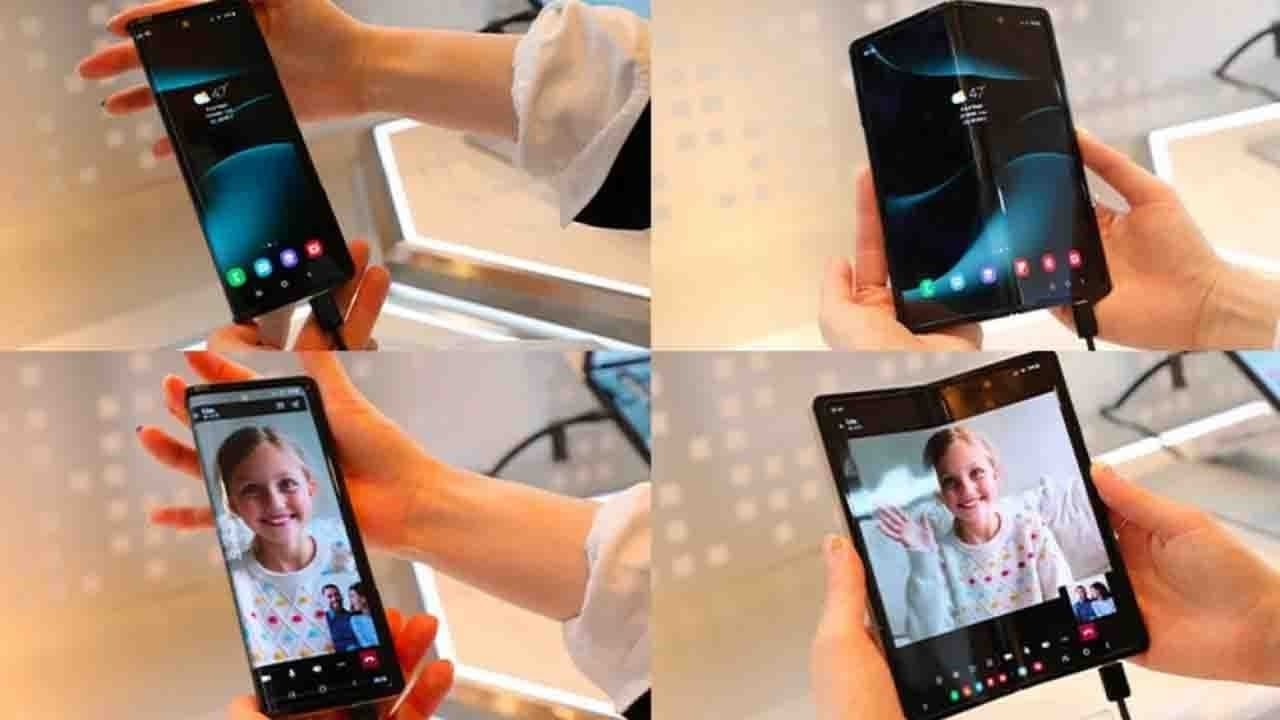Foldable smartphones have come a long way in recent years, with most manufacturers adopting the inward-folding design. This design protects the main display inside while providing a smaller outer screen for notifications and basic tasks. However, some companies, like Huawei, have explored outward-folding devices, where the flexible display wraps around the back. While these designs look sleek and futuristic, they pose durability concerns since the display remains exposed at all times. But what if a smartphone could fold both inward and outward? That’s exactly what Samsung has envisioned in its latest patent. Samsung has developed a 360-degree foldable phone, allowing users to fold the screen in both directions.
This innovation could eliminate the need for a separate cover display while maximizing usability. The patent, spotted and visualized by @xleaks7, provides insight into how this futuristic foldable could work.
How Does Samsung 360-Degree Foldable Phone Work?
Unlike traditional foldable phones that have a single folding direction, Samsung’s patented design introduces:
- A Flexible Display with 360-Degree Folding Capability – This allows users to fold the screen both inward (for protection) and outward (for instant accessibility) without requiring a secondary display.
- Supportive Layers for Durability – To prevent screen damage, Samsung has developed self-supporting layers beneath the ultra-thin glass (UTG) screen. These include flexible polymer substrates and a flexible adhesive layer, improving the screen’s strength while maintaining flexibility.
- Separate Fold Axes and Custom Support Plates – Unlike regular foldable hinges, this device employs custom fold axes and support plates with a lattice and stripe pattern. This design ensures that the device bends smoothly in both directions without compromising durability.
Interestingly, even in its folded state, a small section of the display remains exposed beneath the camera modules. This could serve as a notification strip or quick-access display, reducing the need for an additional cover screen.
Samsung’s Previous Experiments with 360-Degree Foldables
This isn’t Samsung’s first attempt at a 360-degree foldable phone. Back in 2023, the company showcased a “Flex In & Out” concept device, demonstrating a similar dual-folding capability. However, since that demo, Samsung has remained quiet about its progress in bringing this design to the market.
Now, with this newly surfaced patent, it appears that Samsung is actively refining the technology. While patents don’t always translate into real-world products, this innovation suggests that Samsung is exploring ways to push foldable technology beyond its current limitations.
What This Means for the Future of Foldables
If Samsung succeeds in commercializing this 360-degree foldable device, it could revolutionize the foldable smartphone market. Potential benefits include:
- More Versatile Use Cases – A device that can switch between inward and outward folding modes would provide more flexibility for users.
- No Need for a Cover Display – Eliminating the outer screen could reduce complexity and lower production costs.
- Improved Durability – With advanced supportive layers, this design could address the fragility issues seen in current outward-folding devices.
However, challenges remain, including durability concerns, battery placement, and pricing, as such an advanced design would likely increase production costs.
While Samsung has yet to announce an official product using this technology, this patent shows that the company is committed to pushing the boundaries of foldable innovation. Whether or not we see a 360-degree foldable Galaxy Fold in the near future, this design paves the way for more versatile, durable, and efficient foldable smartphones.

